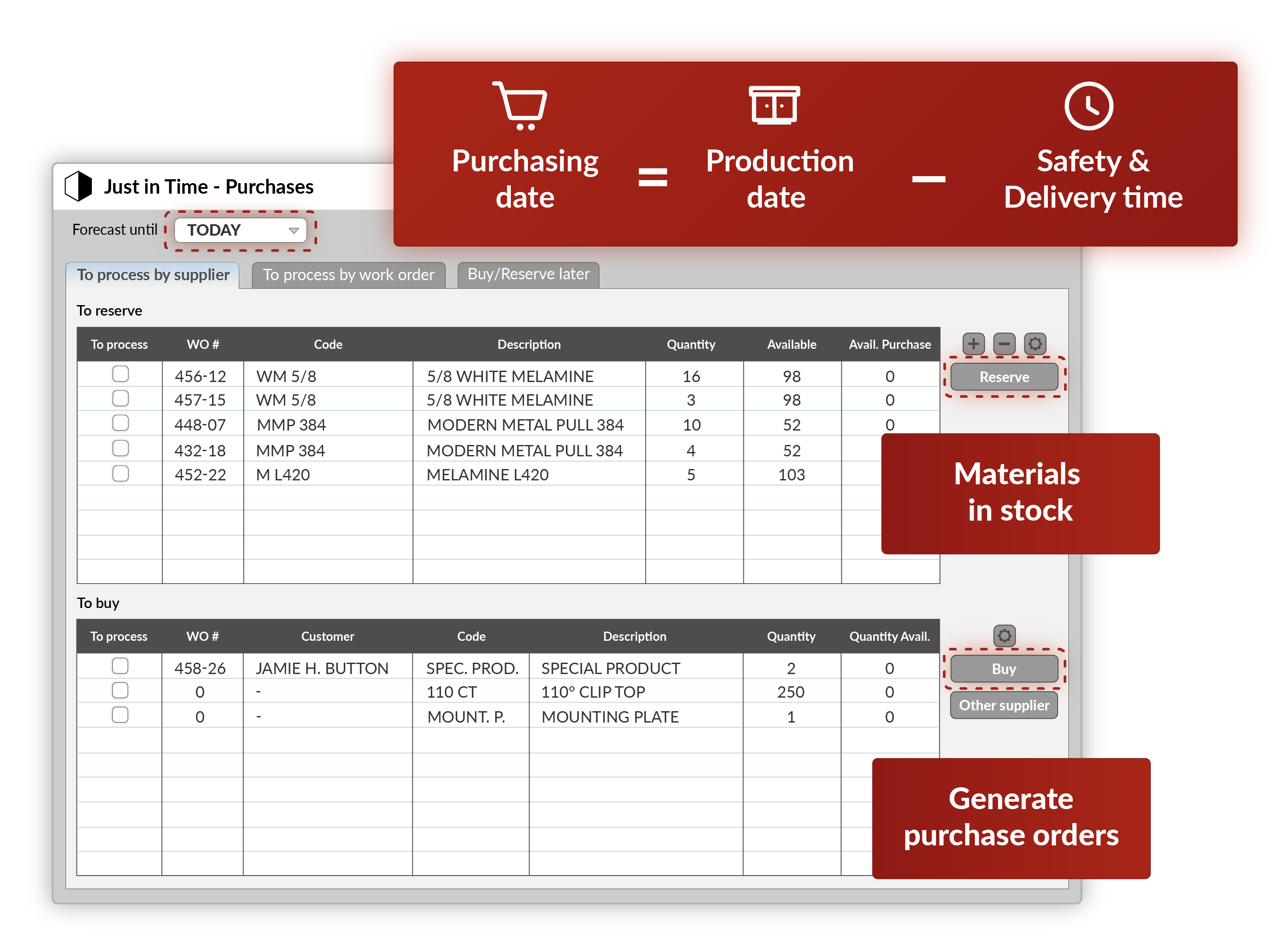
Purchasing management
In an increasingly dynamic business environment, purchasing management is becoming crucial to maintaining operational efficiency and controlling costs. Discover how an integrated ERP software can transform your purchasing processes, optimize your procurement, and enhance your company’s financial control.
Best Practices for Managing Your Purchasing with ERP Software
Purchasing management is a key factor in a company’s performance, especially in the manufacturing sector. Poor procurement management can lead to production delays, cost overruns, and decreased profitability. An integrated ERP software, like the one offered by Cienapps, helps optimize purchasing by centralizing data, automating processes, and improving cost control. Here are the best practices for effectively managing your purchasing with an ERP.
1. Centralize and Automate the Purchasing Process
An ERP allows you to centralize all information related to purchasing: suppliers, quotes, purchase orders, and invoices. By automating these processes, you reduce the risk of errors and save time in managing purchases.
2. Optimize Supplier Selection and Management
With an ERP, you can easily compare supplier offers, monitor performance, and negotiate better terms. Access to transaction history and performance indicators helps you identify the most reliable and cost-effective partners.
3. Better Manage Inventory and Procurement
An ERP provides real-time visibility into your inventory levels, helping you avoid stockouts and overstocking. With features like reorder point management and automated alerts, you can anticipate needs and adjust your orders accordingly.
4. Control Costs and Optimize Budgets
Thanks to detailed expense tracking and budget forecasting, an ERP helps you optimize your purchasing by considering actual costs and refining your purchasing strategies. This gives you better financial control and helps identify potential savings.
5. Streamline Cross-Department Collaboration
Purchasing involves more than just the procurement department. An ERP facilitates communication between departments (production, finance, inventory management) by ensuring full transparency and avoiding duplication or errors.
6. Track and Analyze Purchasing Performance
With an ERP, you gain access to dashboards and detailed reports to analyze your purchasing processes. This allows you to spot trends, adjust your strategies, and make data-driven decisions.
Cienapps: An ERP Solution Tailored to Your Purchasing Needs
At Cienapps, we offer a powerful ERP solution that integrates purchasing and procurement management. With our software, you gain complete visibility over your purchasing processes, improved cost control, and optimized resource management.
Conclusion
Optimizing purchasing management with an ERP means reducing costs, improving efficiency, and enhancing overall business performance. By adopting best practices and a tailored solution like Cienapps, you ensure a smooth and strategic procurement process. Contact us today to discover how our ERP can transform your purchasing operations!




